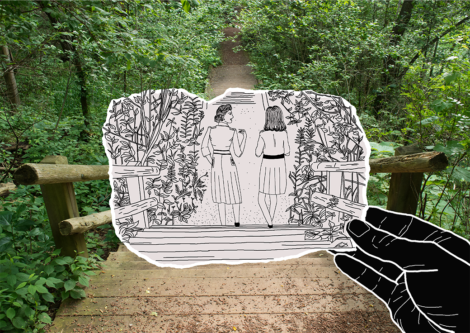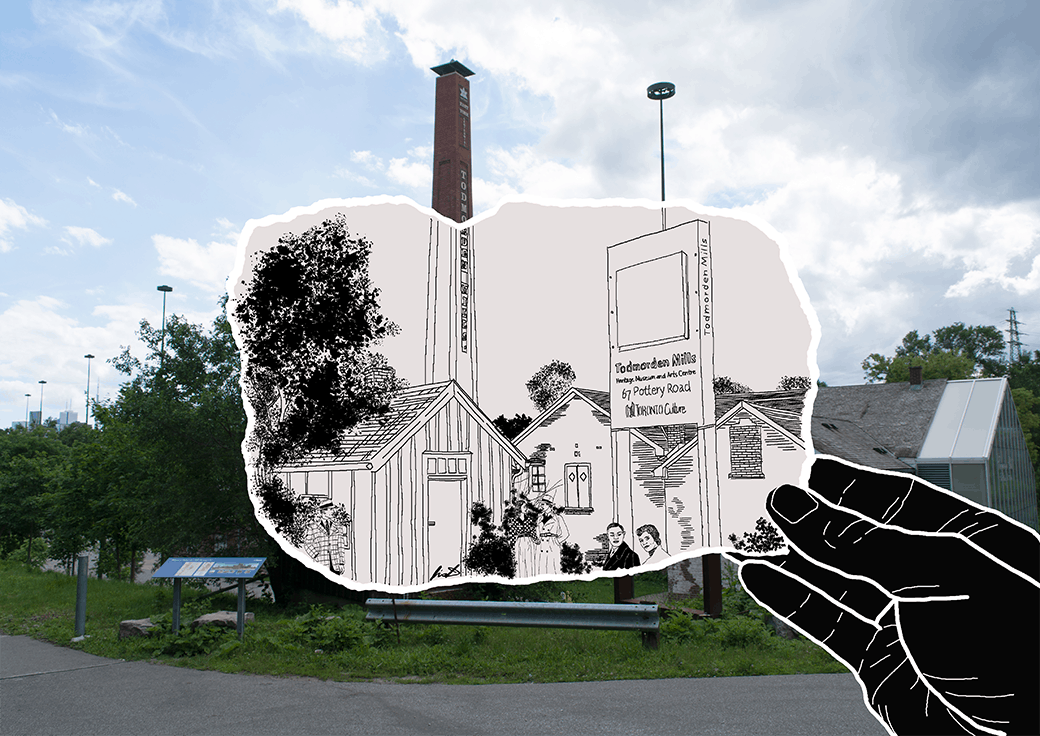July 1 marked 150 years since Canada’s confederation. This summer series focuses on events that explore this milestone while pondering the question: how did we get here?
A couple walks by me wearing World War Two-era costumes. War propaganda posters line the walls of a refurbished nineteenth century brewery. Lining the former banks of the Don River sits Todmorden Mills, a former industrial hub of East York and present-day heritage site, standing as a symbol of Toronto’s cultural and economic growth.
Celebrating its 50th year as a heritage site, Todmorden Mills held a Canada 150 event on June 18 revolving around the ‘Fab Forties’ in Canada. The event was held in celebration of the 1940s, showcasing the decade’s significance to Toronto, as well as the impact it had on Canadian culture. Staff and visitors alike dressed up and explored a rendition of the era at Todmorden Mills, enjoying the light-hearted atmosphere of the site.
Operated by the City of Toronto, Todmorden Mills Heritage Site opened in 1967 for Canada’s centennial anniversary to commemorate the area, which was occupied between the 1790s and 1965 by private residents and family businesses. A lesser-known relic of Toronto’s European settlement history, the site was chosen due to many of its original buildings remaining intact, despite the surrounding growth of the city.
My visit to Todmorden Mills’ Fab Forties event begins by exploring the exterior of the site, which includes a former brewery, cottage, paper mill, and the Wildflower Preserve. Sitting between the paper mill and the brewery is a red brick road, a product of the Don Valley Brick Works, a former factory across the valley.
The tranquil atmosphere is present even as I enter my first building: the brewery. Built by the Helliwell family, it is one of the oldest remaining buildings on site, and adorned with red bricks stamped “DON,” signifying they were made by the Don Valley Brick Works; these bricks have also been used to build many other historic buildings in Toronto, including the Ontario Legislature buildings, Convocation Hall, Toronto General Hospital, and Casa Loma.
Notwithstanding the age of the brewery, the interior is refurbished in a modern style. To reflect the Fab Forties, an employee in charge of the brewery shows me a selfie station with a cut-out of Sir Winston Churchill, as well as war-era board games that challenge players to travel across Britain and consider combat strategy.
Reminding myself of the total war mentality that was promoted then, I arrive at a cottage — the last building to be occupied on the site — inspired by the memory of a woman named Helen Brookfield, who had lived in the cottage from 1921 to 1952.
Inside the house are both distinguishable and antiquated elements of a modern kitchen; this includes a wood-oven stove, a mechanical washing machine, and an electric fridge. There were also recipes local to East York replicated inside and, bearing in mind the conservation efforts of Canada’s total war environment, feels like living history. I am shown prepared foods such as an eggless, dairy-free cake, and a refreshing drink known as orangeade.

IRIS DENG/THE VARSITY
I ask an employee working at the cottage why he thought the 1940s were important to the Toronto area; he says that the war effort placed many women in industry, and Todmorden Mills reflected that industrial life and coming-of-age of Toronto. The decade provided more autonomy for women, and helped build Toronto as an industrial hub for immigrants to flock to after the war.
After stepping out of the cottage, I walk over to the paper mill, which hosts an in-house art gallery. The art on display in the gallery rotates between different groups every two weeks, with local art vendors selling their goods simultaneously.
As a musician, I always enjoy finding potential venues to play, so my favourite part of the paper mill is the theatre, which allows different groups to rent out the space for a variety of events. A Todmorden Mills-hired quartet plays 1940s swing with an upbeat energy that would certainly have brought a community together.
The communal atmosphere that was enjoyed in the Fab Forties, however, seem to have been missing elsewhere on the site and, save for the dance lesson, couples mingle amongst themselves. This appears to be emblematic of a greater issue today where, in exchange for our increasingly open society, we find it simultaneously more difficult to find common lasting bonds with one another.
Although Torontonians in the 1940s were largely of the same culture and religion, the arts — as shown in the Fab Forties event — galvanized a group of attendants that would otherwise not have interacted.
Though I enjoyed admiring the music and dancing, I soon decide to explore the last recent addition to the site — the Wildflower Preserve. Created by the efforts of local naturalists Charles Sauriol and Dave Money, the Wildflower Preserve sought to reintroduce native flora to the region and remove invasive, non-native species. It opened in 1991 to ensure the protection of its natural heritage, which has been used by Indigenous peoples for 11,000 years. Although settlers took much of the Todmorden Mills area for themselves, the restoration of its natural heritage is one way to show appreciation for the people and environment that aided settlers in developing the Toronto area through the nineteenth century.
Walking along the path, I notice a clear contrast between the Wildflower Preserve and the towering buildings at the top of the Don Valley, serving as a reminder to respect our environment and remember the heritage that built our modern society. The war effort of the 1940s would have likely taken from the surrounding flora, as had been done for millennia before. However, the rapid development of the region after the war nearly threatened the existence of the site’s natural heritage.
Relics of Toronto’s birth like Todmorden Mills remind us all that Canada has changed a lot in the last 150 years, and makes one appreciate that although Confederation was 150 years ago, Canada’s building blocks were present long before.


